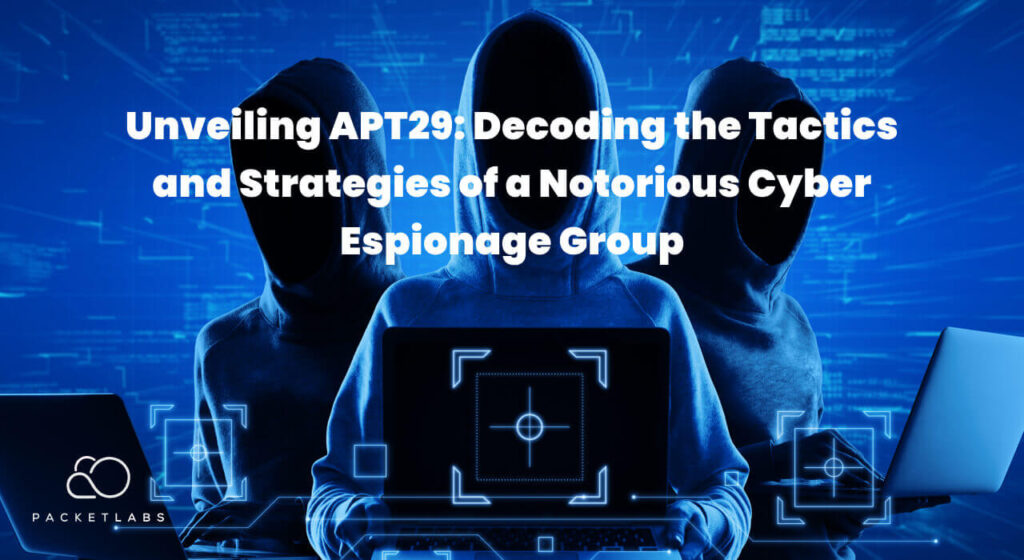
In the ever-evolving landscape of cybersecurity threats, advanced persistent threat (APT) groups stand out as some of the most formidable adversaries. Among these, APT29, also known as Cozy Bear, has gained notoriety for its sophisticated cyber espionage operations.
This group’s tactics, techniques, and procedures (TTPs) have attracted the attention of cybersecurity experts and government agencies worldwide. In this article, we delve into the world of APT29, exploring their origins, tactics, and strategies.
Origins and Attribution
APT29, believed to be operating out of Russia, first came to prominence around 2014. It is often associated with state-sponsored cyber espionage, with the Russian government suspected of backing the group. This attribution is based on various factors, including the targets of their attacks, the timing of their operations, and the techniques employed. However, it’s essential to note that attribution in the cyber realm can be challenging and often subject to ongoing investigation.
Targets and Objectives
The primary focus of APT29’s activities appears to be stealing sensitive information from a wide range of targets. These targets have included government agencies, military organizations, diplomatic entities, and various sectors such as aerospace, technology, and energy. The stolen data is often used to gain a competitive advantage, inform foreign policy decisions, or simply to further the group’s own interests.
Tactics and Techniques
APT29’s success lies in its ability to remain covert and adapt to changing security landscapes. Some of the group’s notable tactics and techniques include:
1. Spear Phishing
APT29 frequently employs highly targeted spear-phishing campaigns to gain an initial foothold in their victim networks.
These emails are meticulously crafted to appear legitimate and often exploit known vulnerabilities or employ social engineering tactics.
2. Zero-Day Exploits
The group is known for exploiting zero-day vulnerabilities, which are software vulnerabilities that are unknown to the vendor and therefore lack available patches.
This enables APT29 to maintain persistent access to compromised systems.
3. Watering Hole Attacks
APT29 has been observed compromising websites that their targets are likely to visit, turning these sites into watering holes.
When victims visit these sites, their systems are infected with malware, allowing the group to gain access to their networks.
4. Custom Malware
The group often employs custom-built malware that is difficult to detect by traditional security solutions.
Examples include the Hammertoss malware, which uses legitimate platforms like Twitter to communicate with its command and control servers.
5. Living off the Land
APT29 makes use of legitimate tools and processes already present on a victim’s system, reducing the likelihood of detection.
This technique is referred to as living off the land.
Strategies and Implications
The overarching strategy of APT29 involves maintaining long-term access to compromised networks. This prolonged presence enables them to gather intelligence continuously and pivot to new targets within the victim’s network. Such activities can have severe implications, including:
1. National Security Threats
APT29’s espionage activities can compromise national security by stealing classified information related to defense, foreign policy, and intelligence.
2. Economic Espionage
The theft of sensitive business information can harm industries and economies, giving adversaries an unfair advantage in negotiations and competition.
3. Diplomatic Tensions
When state-sponsored groups are attributed to cyber attacks, it can lead to diplomatic tensions between countries and strain international relations.
4. Loss of Privacy
APT29’s actions can lead to the exposure of personal and sensitive information of individuals, putting privacy at risk.
Defense and Mitigation
Defending against APT29 and similar groups requires a multi-faceted approach:
1. Threat Intelligence
Continuous monitoring and analysis of threat intelligence can provide insights into APT29’s evolving tactics, allowing organizations to stay one step ahead.
2. Patch Management
Keeping software up-to-date and promptly applying security patches can mitigate the risk of falling victim to zero-day exploits.
3. Employee Training
Educating employees about the risks of spear phishing and social engineering can reduce the likelihood of successful attacks.
4. Network Segmentation
Isolating critical systems from less sensitive ones can limit lateral movement within a compromised network.
5. Advanced Security Solutions
Implementing advanced cybersecurity solutions, such as intrusion detection systems, behavior-based analytics, and endpoint protection, can enhance detection and response capabilities.
In conclusion, APT29’s sophisticated tactics and strategies highlight the evolving nature of cyber espionage.
The group’s ability to blend in with legitimate network activity and adapt to emerging security measures underscores the importance of a proactive cybersecurity posture.
As APT29 continues to pose a threat to national security, business interests, and individual privacy, the global cybersecurity community must remain vigilant in deciphering their activities and defending against them.

